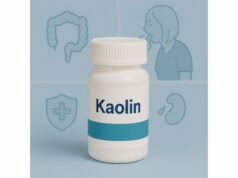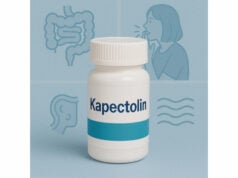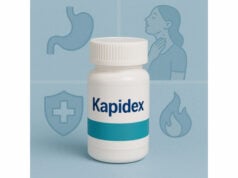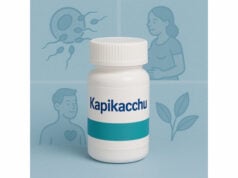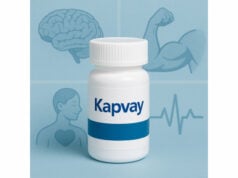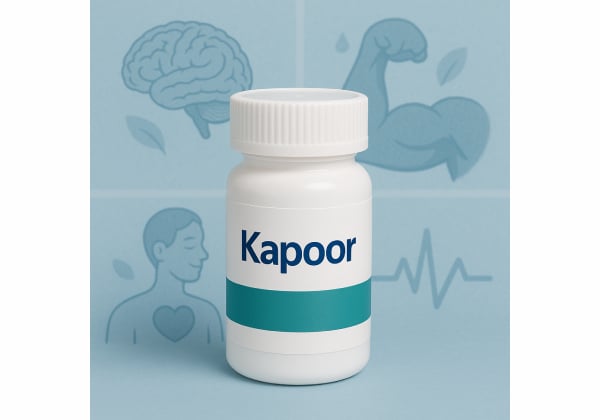
Kapoor—better known globally as camphor—is an aromatic compound distilled from the wood of Cinnamomum camphora (and commonly synthesized to match its natural form). For generations, people have used it in balms and rubs to soothe sore muscles, ease chest congestion, and provide a cooling, numbing feel to irritated skin. Modern over-the-counter (OTC) products use camphor as a topical external analgesic and as part of multi-ingredient vapor rubs for cold symptoms. Its benefits come from counterirritant actions on skin nerve endings and effects on sensory ion channels that temper the perception of pain. Still, camphor demands respect: at high doses—especially if swallowed—it can cause seizures, and concentrated products require strict label-directed use. This in-depth guide explains what camphor is and how it works; when it offers real relief; how to apply it safely; how to read labels and choose strengths; who should avoid it; and what the clinical evidence says. You will also find practical, step-by-step directions, red-flag warnings, and a buyer’s checklist to help you use Kapoor confidently and responsibly.
Essential Insights
- Camphor acts as a topical counterirritant that can temporarily relieve minor muscle and joint pain and ease chest discomfort when used in vapor rubs.
- Typical OTC strengths for external analgesia are 3% to 11% camphor; apply a thin layer to the affected area up to 3–4 times daily as directed.
- Never ingest camphor; high oral doses can provoke seizures and serious toxicity, especially in children—store and use away from food and toddlers.
- Avoid use on broken skin, in infants and toddlers, during pregnancy or breastfeeding unless advised, and if you have seizure disorders or are using interacting medicines.
Table of Contents
- What is Kapoor and how it works
- Benefits and where it helps most
- How to use Kapoor safely at home
- Forms, dosage, and label checks
- Who should avoid and risks
- Evidence summary and buyer’s checklist
What is Kapoor and how it works
What Kapoor is. In everyday language across South Asia, “Kapoor” refers to camphor—a white, crystalline, highly fragrant solid that sublimates (evaporates directly from solid to vapor). In commerce, camphor is supplied as crystals, tablets/blocks, essential oil, and as an active ingredient in ointments, creams, gels, and vapor rubs. Natural camphor is distilled from camphor laurel wood; most modern products use synthetic camphor chemically identical to the natural form, which allows precise control of purity.
Where camphor is used.
- External analgesic: Short-term relief of minor muscle and joint aches (e.g., simple backache, sprains, strains).
- Counterirritant rubs: Blends with menthol, eucalyptus, and other aromatics for chest and throat rubs to ease cough-related discomfort and help you feel less congested.
- Topical itch formulations: In certain combinations, low-to-mid strengths may be labeled to relieve itching from minor skin irritation.
How it works (plain-language mechanism).
Camphor produces a cooling-to-warm sensation that distracts the nervous system from deep pain signals. On a cellular level, it activates and then desensitizes heat-sensitive ion channels (including TRPV1/TRPV3) and can modulate TRPA1, shifting how cutaneous nerves respond. That short-circuits pain perception at the skin level and creates the familiar “counterirritant” effect. When part of chest rubs, the aroma and mild sensory stimulation can reduce the perceived burden of cold symptoms, improving comfort and sleep.
What camphor does not do.
Camphor does not treat infections, clear lung mucus directly, or repair injured tissues. It does not belong inside the nose, mouth, or open wounds. Its benefits are symptomatic and short term, best used alongside rest, hydration, gentle movement, and treatment of the underlying cause when needed.
Regulatory basics.
In many countries, camphor is an OTC active ingredient for topical external analgesics within a defined concentration window. Labels will specify the percentage and the permitted uses (e.g., “temporary relief of minor aches and pains of muscles and joints”).
Scent and volatility: why you notice it.
Camphor’s rapid evaporation gives off a penetrating, minty-balsamic scent that many users associate with relief. That same volatility means you should keep containers tightly closed and store away from heat and flames.
Benefits and where it helps most
1) Minor muscle and joint pain relief.
For everyday aches—simple backache, overuse soreness, post-workout stiffness, and mild sprains/strains—a camphor-containing rub can offer quick, surface-level comfort. The hallmark is a cool-warm sensation that arrives within minutes and lasts for a short window; many people perceive relief sufficient to resume light activity or sleep more comfortably. This effect is especially noticeable when you apply camphor after gentle stretching or a warm shower, because skin blood flow and nerve sensitivity are already primed for modulation.
2) Chest rubs during colds.
Multi-ingredient vapor rubs that include camphor can improve perceived congestion, cough-related irritation, and sleep in both adults and children (when used at age-appropriate strengths and strictly externally). The mechanism is sensory rather than antiviral: menthol and camphor stimulate nasal and throat receptors that shift the sensation of airflow and distract from cough. For many families, a single bedtime application on the chest and neck provides a comforting routine that translates into better sleep quality, even though the cold itself still runs its course.
3) Itch and irritation.
Certain labels include relief for itch from minor skin irritations (e.g., insect bites, contact with soaps/detergents, or mild rashes). Here, camphor’s counterirritant effect can be useful as long as the skin is intact (no cracks, no open lesions) and you avoid mucous membranes. A thin film is generally sufficient—more is not better.
4) Complement to non-drug measures.
Camphor works best when paired with basics:
- For aches: active recovery, gentle mobility, heat or ice as appropriate, and spacing of strenuous sessions.
- For colds: fluids, humidification, saline nasal rinses/sprays, and rest.
- For itch: trigger avoidance, lukewarm showers, bland emollients, and sun/heat moderation.
Where camphor helps less—or not at all.
- Deep structural pain (e.g., severe arthritis flare, radicular pain) usually needs more than a counterirritant.
- Open wounds or burns: camphor is not appropriate and can worsen irritation.
- Children under two (and often under four, depending on product): many formulations are not indicated due to sensitivity and risk.
Realistic expectations.
You are aiming for temporary symptomatic relief—a window of comfort that helps you move, rest, or sleep. Think minutes-to-hours, not all day. If your pain keeps returning strongly or escalates, or if you notice weakness, numbness, fever, or redness spreading, you need a clinical evaluation rather than more topical counterirritant.
Practical tip for sports and desk work.
Use a pea-sized amount on focused areas (neck/upper back tightness, forearm extensor soreness from typing, calf aches from running). Work it in for 30–60 seconds, then wash hands. If you prefer hands-free application, choose a roll-on form.
How to use Kapoor safely at home
Choose the right product for your goal.
- For muscle/joint aches: look for external analgesic creams, gels, roll-ons, or ointments listing camphor 3% to 11%.
- For cold symptoms: choose a vapor rub with age-appropriate directions; many combine camphor with menthol and eucalyptus.
- For itch: use products specifically labeled for minor skin irritation; keep to the lowest effective strength.
Step-by-step application (topical analgesic).
- Check the label: confirm camphor percentage and directions, especially age limits and maximum daily frequency.
- Test a small area (inner forearm) first to screen for sensitivity.
- Apply a thin layer to the affected area and massage gently until absorbed.
- Wash hands thoroughly to avoid transferring product to eyes, nose, or mouth.
- Repeat up to 3–4 times daily only if the label allows; more frequent use adds irritation without extra benefit.
- Stop if burning becomes painful, rash develops, or symptoms worsen.
Step-by-step application (vapor rub).
- Use externally on the chest, neck, and back; do not place inside nostrils, mouth, or on broken skin.
- Rub a pea to marble-sized amount until a thin film covers the area; clothing traps the vapors for a sustained effect.
- For sleep, apply 20–30 minutes before bed; a cool-mist humidifier in the room can complement the aroma.
- Avoid heat sources (heating pads, hot water bottles) over the application site to prevent skin injury.
- Never microwave vapor rubs or use them in boiling water; splashes and superheated petrolatum are burn hazards.
Inhalation bowls and diffusers—use caution.
Smoking-hot bowls and open flames are unnecessary and risky. If you prefer aromatics, opt for room-temperature methods (e.g., a small amount on a tissue nearby). Essential oil forms are highly concentrated; follow the manufacturer’s guidance strictly and keep away from children and pets.
Household safety rules that prevent emergencies.
- Lock away camphor crystals, blocks, oils, and rubs—toddlers are curious, and camphor has a candy-like appearance.
- Never decant into food containers or beverage bottles.
- Label your jars and keep them separate from spices used in cooking.
- Teach children early: “smell with eyes, not with hands,” and always ask an adult.
If exposure happens.
- Eye contact: rinse with lukewarm water for 15 minutes; seek care if irritation persists.
- Skin over-application: wash with soap and water; apply bland moisturizer if irritated.
- Accidental swallow: do not induce vomiting; contact your local poison center immediately. Seizures can occur quickly in significant ingestions, particularly in children.
When to see a clinician.
- Aches persist or worsen after 7–10 days of labeled use.
- You develop fever, spreading redness, or severe localized pain.
- Cough and congestion persist beyond a normal cold course or you have shortness of breath, wheeze, or chest pain.
Forms, dosage, and label checks
Understanding strengths and percentages.
On OTC labels, camphor content is listed as a percent (%) of the finished product. For external analgesics, typical strengths fall between 3% and 11%. Products outside this range for topical pain are uncommon and may not meet OTC norms. For vapor rubs, the percentage is often toward the lower–middle end and appears alongside menthol and sometimes eucalyptus oil.
Formulations and how they feel.
- Ointments/balms (petrolatum base): occlusive, slow-release, good for nighttime and dry skin.
- Creams (oil-in-water): fast rub-in, less greasy, suitable for daytime use under clothing.
- Gels (alcohol/water): quick-drying with a pronounced initial cooling feel; may sting on sensitive skin.
- Roll-ons/sticks: hands-free, precise application—helpful for the neck and small joints.
Single-ingredient vs blends.
Camphor often pairs with menthol (cooling) or methyl salicylate (warming). These blends can layer sensations and slightly extend perceived relief. If you are sensitive to salicylates (aspirin sensitivity), select salicylate-free products and stick with camphor/menthol combinations.
Reading the Drug Facts panel like a pro.
- Active ingredient(s): look for camphor X% and any partners.
- Uses: confirm the indication matches your need (e.g., muscle/joint pain vs itch).
- Warnings: age limits, “for external use only,” flammability, and conditions that require a clinician’s advice.
- Directions: maximum frequency per day and application method (thin layer; do not bandage tightly).
- Inactive ingredients: choose bases that suit your skin (avoid allergens if you have known sensitivities).
Dosing guidance in practice.
- Topical pain relief: apply a thin film over the painful area up to 3–4 times daily (as directed by your specific product). Massage briefly and wash hands.
- Chest rubs: once in the evening and optionally once during the day with persistent symptoms. Do not apply in or around the nostrils of young children.
- Itch relief: thin application to intact skin only; avoid repeated use on the same spot if irritation develops.
Special notes on crystals and essential oil.
Loose camphor crystals and essential oil are potent and not standardized for direct skin application. If you use them for cultural or ceremonial purposes, do not apply to skin, do not ingest, and keep well away from children. For health-related uses, prefer regulated OTC products with a Drug Facts label and explicit directions.
Storage and shelf life.
Camphor is volatile—keep containers tightly closed, at room temperature, away from heat and flames. Discard products that have separated, changed odor unusually, or are past expiration.
Travel tips.
Pack small, labeled containers in a zip bag; avoid leaving them in hot cars or near heaters. For flights, ointments count toward liquids/gels policies.
Who should avoid and risks
Common side effects (usually mild and brief).
- Skin sensations: cooling, warmth, mild tingling or stinging at application sites.
- Local irritation: transient redness or dryness, more likely with gels or frequent reapplication.
- Aroma sensitivity: some users experience headache or nausea with strong scents.
Less common but important reactions.
- Contact dermatitis: itchy rash or hives—stop the product and switch to a bland emollient; seek evaluation if persistent.
- Vasovagal symptoms: rare lightheadedness from strong aromas—use smaller amounts and improve room ventilation.
Serious toxicity—what raises the alarm.
Camphor can be dangerous if swallowed or overapplied to large skin areas, particularly in infants and young children. Significant exposure can cause nausea, vomiting, agitation, confusion, and seizures that may occur within minutes to a couple of hours. Because crystals and concentrated oils look and smell “minty,” children may accidentally ingest them. Treat ingestion as an emergency: call your local poison center and seek medical care immediately.
Who should avoid camphor or use only with clinician guidance.
- Infants and toddlers, and children for whom the label says “do not use.”
- Pregnant or breastfeeding individuals (insufficient safety data for routine use).
- People with seizure disorders or a history of camphor sensitivity.
- Those with asthma or fragrance-triggered headaches—aromatic rubs can provoke symptoms.
- People with broken, irritated, or burned skin—do not apply to these areas.
- Anyone with salicylate sensitivity should avoid camphor products that include methyl salicylate.
Drug and diagnostic interactions (high-yield).
- Topical layering: do not combine multiple strong counterirritants over the same skin area; irritation adds up.
- Heat and occlusion: avoid heating pads or tight bandages over camphor applications; this can accelerate absorption and injure skin.
- Dermatologic procedures: avoid camphor products before and after peels, laser treatments, or microneedling unless your clinician says otherwise.
Household and cultural uses—safety adaptations.
Camphor is also used in religious ceremonies and as an air freshener in some households. If burning camphor tablets:
- Keep flames away from curtains and aerosols, and never leave unattended.
- Ensure ventilation to avoid irritating fumes.
- Store tablets locked away after rituals; treat them like any other household hazard.
Pets.
Dogs and cats can be sensitive to camphor if they lick recently treated skin or chew containers. Apply camphor products where pets cannot lick, and wash your hands before pet contact.
When to stop and seek help.
- Severe burning, blistering, or rash at application sites.
- Persistent cough, wheeze, chest tightness, or shortness of breath after using a vapor rub.
- Any accidental ingestion, especially in a child, or new seizure activity.
Evidence summary and buyer’s checklist
What the evidence supports.
- Topical pain relief: Camphor at OTC strengths functions as a counterirritant. Its sensory actions on heat/cold receptors (TRP channels) align with temporary reductions in perceived pain for minor muscle and joint aches.
- Cold-symptom comfort: Multi-ingredient vapor rubs that include camphor can improve nighttime cough discomfort and sleep quality, especially as part of a consistent bedtime routine. Benefits are symptomatic; they do not shorten the common cold’s duration.
- Mechanistic clarity: Laboratory and clinical overviews explain camphor’s TRPV1/TRPV3 activation and TRPA1 modulation, which together produce the cooling–warming sensations and analgesic effects users notice.
What to be cautious about.
- Toxicity thresholds: Significant oral exposures can trigger seizures; children are particularly at risk. Even dermal/inhalation overexposures in small bodies can cause neurologic symptoms. This is why labels emphasize external use only, age limits, and strict dosage frequency.
- Product variation: While most regulated OTC products adhere to clear concentration windows and labeling, camphor crystals and essential oils sold as household goods may lack child-resistant packaging and can be far more concentrated.
How to choose better products (buyer’s checklist).
- Check the camphor percentage: for pain relief, look for 3% to 11%; ensure the label states the concentration.
- Read the “Uses” section: it should match your need (e.g., “minor aches and pains of muscles and joints”).
- Scan warnings: “for external use only,” age limits, flammability, and “do not bandage tightly.”
- Prefer reputable manufacturers: established brands with clear Drug Facts panels and batch numbers.
- Pick the base you prefer: ointments for overnight, creams for daytime, gels for fast-dry, roll-ons for tidy application.
- Starter size: if you have sensitive skin, buy a small tube/jar first to test tolerance.
Smart use principles (recap).
- Apply thin layers to intact skin, no more than label frequency.
- Keep products locked away from children and pets; avoid decanting into food-like containers.
- Combine with non-drug measures: movement, hydration, humidified air, sleep, and ergonomics.
- Reassess after a week for aches or after a few nights for cold symptoms; if not improving, consult a clinician.
The bottom line.
Kapoor (camphor) earns its place in the medicine cabinet as a fast-acting topical comfort aid. Use it thoughtfully—choose the right strength, apply correctly, and respect its potency and risks. With sensible, label-guided use, most adults can gain meaningful, short-term relief from everyday aches and congestion discomfort while keeping safety front and center.
References
- Final Administrative Order OTC000033_M017-External Analgesic Drug Products for OTC Human Use (2023) (Guideline)
- The Current State of Research on the Clinical Applications of Menthol and Menthol-Containing Products (2023) (Review)
- Aromatic ointments for the common cold: what does the evidence say? (2022) (Systematic Review)
- Clinical Practice Guidelines : Camphor poisoning (Accessed 2025) (Guideline)
- Seizures due to high dose camphor ingestion (2015) (Case Report)
Medical Disclaimer
This article provides general educational information and is not a substitute for professional medical advice, diagnosis, or treatment. Always follow the directions on your product’s label and consult a qualified healthcare professional about your individual circumstances—especially for children, during pregnancy or breastfeeding, if you have seizure disorders, respiratory disease, or sensitive skin, or if symptoms persist or worsen. Seek urgent care immediately after any accidental ingestion, seizure, severe rash, breathing difficulty, or eye exposure.
If you found this guide useful, please consider sharing it on Facebook, X (formerly Twitter), or your preferred platform, and follow us for more practical, evidence-informed health articles. Your support helps us continue producing high-quality content.

